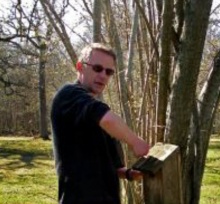Long-term data reveal subtle but ubiquitous selection on body size in a natural population

Mats BJÖRKLUND
Evolutionary Biology Center, Uppsala University, Suède mats.bjorklund@ebc.uu.se
(Talk in English)
We have analysed selection on two important life-history traits, date of first egg and clutch size, and body size in a natural population on collared flycatchers in Sweden over a period of 33 years. In that time period there has been a significant increase in spring temperature and clutch-size and an earlier onset of breeding. This gives us an opportunity to analyse how well we can predict changes in life-history traits and body size given our knowledge of the patterns of selection and genetic variance of the traits. We can also get an understanding on the long-term importance of constraints in terms of phenotypic and genetic correlations. From this we can get a better understanding of the role of selec-tion versus the role of other factors such as plasticity in the long-term pattern of phenotypic change.
Recent publications:
- Björklund M, Husby A, Gustafsson L (2013) Rapid and unpredictable changes of the G-matrix in a natural bird population over 25 years. J Evol Biol 26: 1-13.
- Björklund, Gustafsson L (2013) The importance of selection at the level of the pair over 25 years in a natural population of birds. Ecol Evol 3: 4610-4619.
- Björklund et al. (2014) Increase in body size is correlated to warmer winters in a passerine bird as inferred from time series data. Ecol Evol. 5: 59-72.
Paula Dias; paula.dias@cefe.cnrs.fr
Contact du Comité SEEM: seem@services.cnrs.fr. Contact du Labex CEMEB: gestion.cemeb@univ-montp2.fr, www.labex-cemeb.org.


